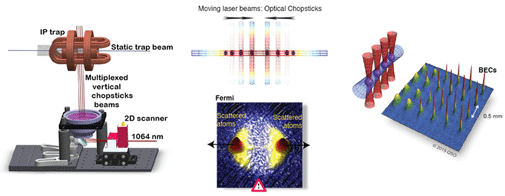Quantum Optics Colloquium by Niels Kjærgaard
The ‘Sideways Effect’
The Pauli exclusion principle, which forbids two indistinguishable fermions from occupying the same quantum state, is one of the most ubiquitous concepts in physics, for example underpinning the periodic table. For particles on a collision course, Pauli exclusion dictates that scattering into 90-degree angles to the collision axis is strictly forbidden: fermions do not go sideways. This talk reports on the direct observation of this purely quantum mechanical effect in a collider experiment using ultracold atomic clouds of fermionic potassium harnessed by steerable optical tweezers. By carefully preparing the potassium atoms to be indistinguishable and gently accelerating two clouds towards each other, images of the scattered halo of atoms reveal a dark band resulting from the ‘no-sideways’ rule. As it turns out, the dark band can, however, be populated via higher order scattering events and I shall discuss the use of our pristine fermionic system as a test bed for multiple scattering dynamics.

Our steerable optical tweezers system used to implement the fermionic collider offers a general, versatile platform for hosting and manipulating multiple atomic ensembles. Using rubidium atoms we have for example demonstrated parallel multi-BEC production and employed the tweezers as test tubes in which atoms are site-selectively prepared in specific internal quantum states and mixed to ‘react’ via Feshbach resonances. My talk will provide an overview over our most recent experimental efforts to develop new tools for characterizing such magnetic Feshbach resonances. This includes a dispersive, optical detection scheme which I will show is a convenient and quite general tool for tracking a range of dynamical processes in an ultracold atom experiment.
